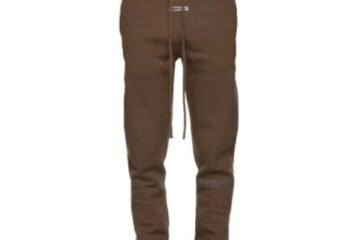The global sportswear market has grown rapidly in recent years, with customers demanding not only stylish apparel but also durable, breathable, and high-performance garments. As brands look for ways to meet these expectations, printing technology plays a crucial role in achieving quality and functionality. Among the latest innovations, DTF Printing for Sportswear has emerged as one of the most versatile and reliable methods for decorating performance fabrics.
This technique delivers vibrant, long-lasting designs that can withstand the challenges of activewear—stretching, sweat, and frequent washing—without compromising fabric performance. Whether you run a custom apparel business, sports team shop, or print-on-demand brand, DTF technology offers the perfect balance of flexibility, durability, and professional results.
What Is DTF Printing?
DTF (Direct-to-Film) printing is a digital transfer process that prints full-color designs onto a special PET film using water-based pigment inks. The design is then coated with an adhesive powder, cured, and transferred onto fabric using heat and pressure.
Unlike traditional methods such as screen printing or sublimation, DTF printing doesn’t require pre-treatment, works on a wide range of materials, and maintains excellent detail and vibrancy. This makes it a popular choice for apparel businesses that deal with various fabric types—including the complex blends used in sportswear.
Why Sportswear Fabrics Need Specialized Printing
Sportswear is different from regular fashion apparel. It’s engineered for performance—using fabrics designed to be lightweight, stretchable, moisture-wicking, and breathable. Materials such as polyester, spandex, nylon, and lycra dominate this category, and each presents unique challenges for printing.
Traditional printing methods often struggle with these fabrics:
-
Screen printing inks may not bond well with synthetic fibers.
-
Heat transfer vinyl can feel heavy and restrict fabric flexibility.
-
Sublimation printing works only on 100% polyester and light-colored fabrics.
This is where DTF Printing for Sportswear stands out. It adheres strongly to synthetic materials, maintains fabric flexibility, and offers outstanding wash resistance—all while preserving the garment’s performance features.
Benefits of DTF Printing for Sportswear
Let’s explore why DTF printing is quickly becoming the go-to method for modern sportswear brands.
1. Superior Fabric Compatibility
Performance fabrics used in sportswear—like polyester-spandex blends, elastane, and microfiber—require a printing method that can adapt without damaging the material.
DTF printing applies transfers at lower heat settings than traditional vinyl or sublimation, protecting delicate fibers. The adhesive used in the DTF process bonds smoothly to synthetic materials, ensuring long-lasting prints without cracking or peeling.
2. Stretchable and Flexible Prints
Athletic wear must stretch and move with the body. Traditional prints often restrict flexibility or crack when the fabric expands.
DTF printing produces soft, elastic designs that stretch naturally with the garment. This flexibility ensures that logos, numbers, and artwork maintain their shape and color even during intense physical activity, making it ideal for sports teams and activewear brands.
3. Breathable and Lightweight Finish
Comfort is critical for performance apparel. Heavy or thick designs can interfere with airflow and cause discomfort.
DTF prints are thin, smooth, and breathable. They integrate into the fabric rather than sitting heavily on top, maintaining the natural feel of sportswear. This allows athletes and fitness enthusiasts to move freely without feeling restricted or overheated.
4. Outstanding Durability
Sportswear undergoes repeated stretching, washing, and exposure to sweat. Ordinary prints fade or peel under such stress, but DTF transfers are designed to endure.
They resist cracking, fading, and peeling even after multiple wash cycles. The adhesive forms a strong bond with synthetic fibers, ensuring that your designs remain vibrant and professional for the long term. This reliability gives brands and teams confidence in the quality of their apparel.
5. Full-Color, High-Detail Designs
Sportswear often includes vibrant team colors, detailed logos, and dynamic patterns. DTF technology can reproduce complex gradients, photographs, and small details with exceptional clarity.
Unlike screen printing, which limits colors due to setup complexity, DTF printing allows unlimited hues and shades in a single print. This capability is perfect for modern sportswear brands that want bold, eye-catching designs that stand out.
6. Quick and Efficient Production
In a fast-paced sportswear business, quick turnaround is essential. Teams often need custom jerseys or gear on short notice.
DTF printing eliminates lengthy setup times. You can print multiple designs back-to-back, store transfers for later use, and press them as needed. This on-demand flexibility helps reduce downtime, allowing you to fulfill both small and bulk orders efficiently.
7. Ideal for Personalization
Athletic apparel often requires individual names, numbers, or sponsor logos. DTF printing allows easy customization without the hassle of reconfiguring setups or burning new screens.
You can print unique designs for each player or customer in one production run, making DTF an excellent solution for sports leagues, fitness clubs, and corporate events.
8. Eco-Friendly Solution
As sustainability becomes a priority in the apparel industry, DTF technology provides an environmentally responsible alternative. It uses water-based inks, produces minimal waste, and requires less energy compared to traditional printing methods.
This eco-conscious approach appeals to modern consumers who value sustainability—helping brands strengthen their reputation and meet green business goals.
DTF vs. Other Printing Methods for Sportswear
Let’s see how DTF compares to the most common alternatives:
| Feature | DTF Printing | Sublimation | Screen Printing | Heat Transfer Vinyl |
|---|---|---|---|---|
| Works on polyester & blends | ✅ Yes | ✅ Yes | ⚠️ Limited | ✅ Yes |
| Works on dark fabrics | ✅ Yes | ❌ No | ✅ Yes | ✅ Yes |
| Stretchable finish | ✅ Excellent | ⚠️ Moderate | ⚠️ Limited | ⚠️ Limited |
| Setup cost | ✅ Low | ✅ Low | ❌ High | ✅ Low |
| Detail & color range | ✅ Excellent | ✅ Excellent | ⚠️ Moderate | ⚠️ Limited |
| Wash durability | ✅ High | ✅ High | ✅ High | ⚠️ Moderate |
Clearly, DTF printing offers the best overall balance for sportswear—combining flexibility, quality, and efficiency.
Tips for Using DTF Printing on Performance Fabrics
To achieve the best results with DTF printing on sportswear, follow these professional tips:
-
Pre-press garments for 5–10 seconds to remove moisture.
-
Use moderate heat (150–160°C) and medium pressure during transfer.
-
Peel cold for maximum adhesion on synthetic materials.
-
Re-press after peeling for 5–8 seconds to lock in durability.
-
Use quality DTF inks and films designed for stretch fabrics.
Following these guidelines ensures soft, durable, and professional-quality prints that align with sportswear performance standards.
Why DTF Printing Is the Future of Activewear
DTF printing represents the next evolution in custom sportswear decoration. It combines all the qualities that modern consumers and brands demand—vibrant colors, flexibility, durability, and speed.
As athletic apparel continues to dominate the global market, more manufacturers are switching to DTF because it simplifies production while maintaining top-tier results. From local sports clubs to major fitness brands, the shift toward DTF technology shows no signs of slowing down.





